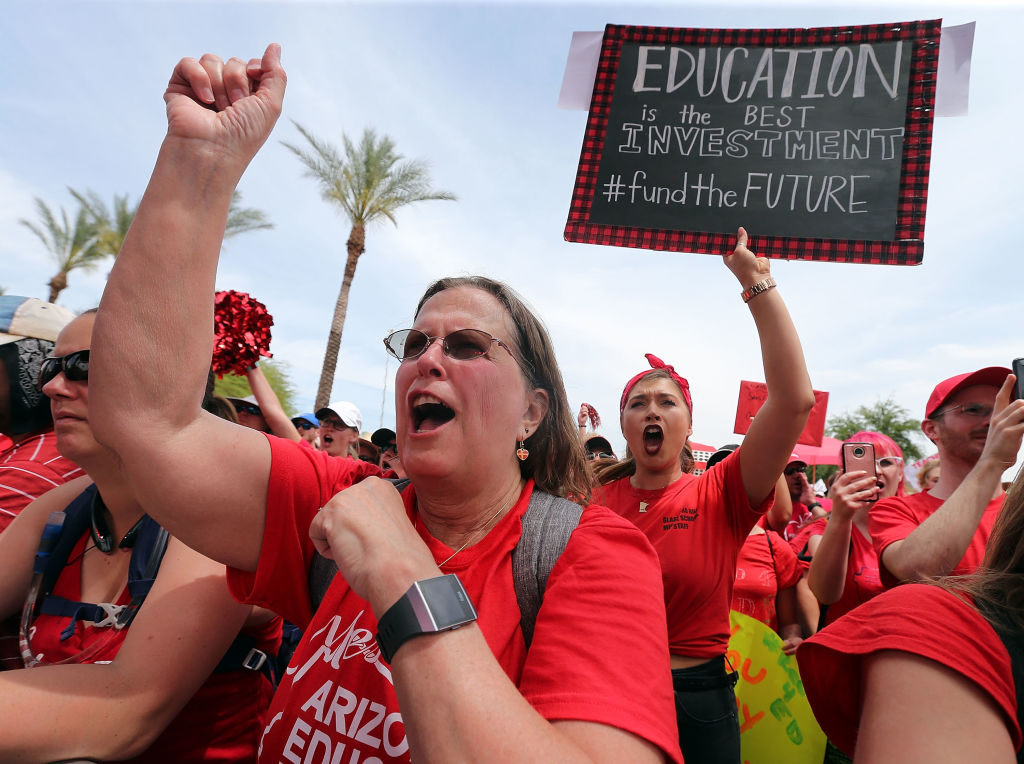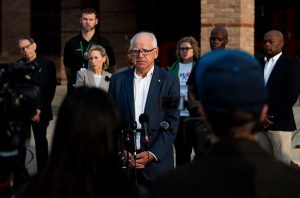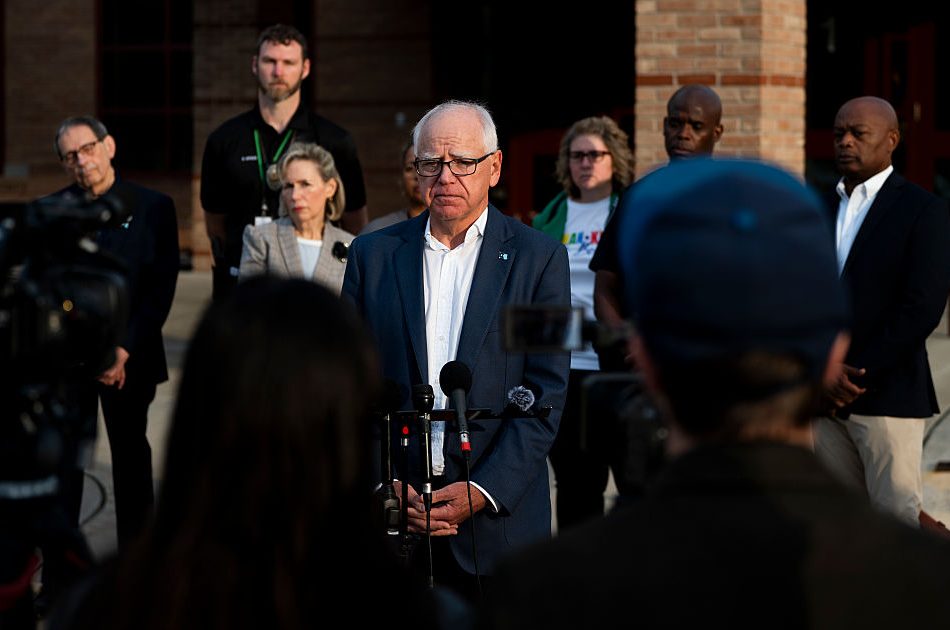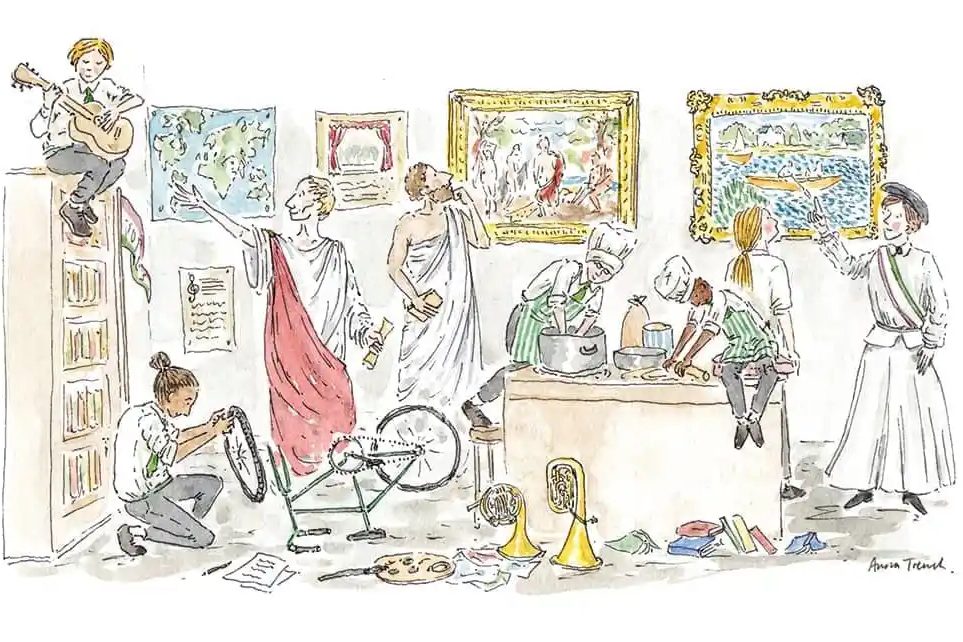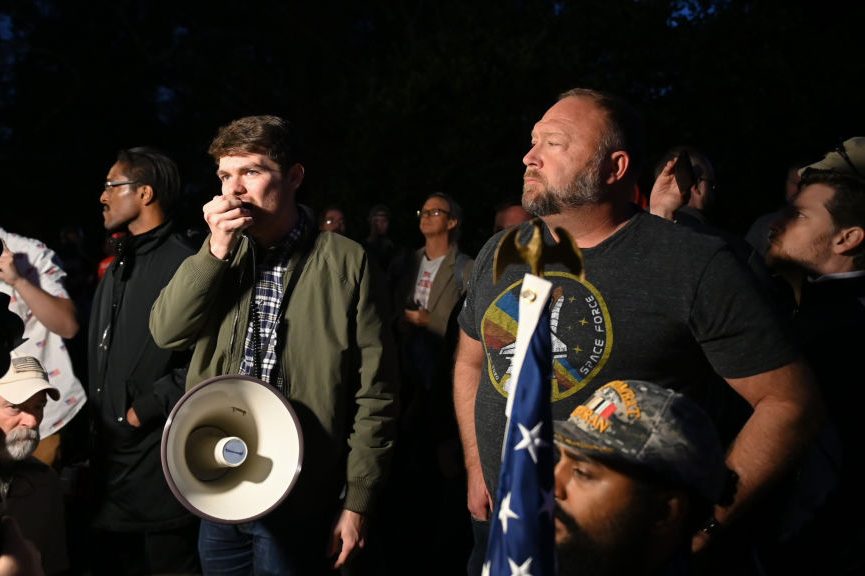In a surprise development, teachers’ unions in eight states recently announced drives to pass legislation that would establish so-called “wealth taxes.” Working with progressive legislators in California, Connecticut, Hawaii, Illinois, Maryland, Minnesota, New York, and Washington, the unions have devised what they believe are the best ways to tap, not just the incomes, but the assets of the most successful earners.
Under the bill proposed in California, for example, residents with both financial and illiquid assets would be required to file yearly reports on their holdings, obligating those worth more than a certain amount to pay 1 to 1.5 percent of the total to Sacramento, even if they move out. The plan emerging in Illinois would treat unrealized capital gains as income, taxable at 4.95 percent, regardless of whether the assets had ever been sold.
The publicly declared goal of this effort is to shrink what backers say is an “unconscionably wide gap” between America’s wealthiest citizens and those at the bottom of the economic ladder. “We are here today to put billionaires and multimillionaires on notice,” as Washington state Senator Noel Frame described the organizers’ intent. “They will pay what they owe.”
More skeptical observers, such as the Wall Street Journal, have detected another motive. They note that the unions proposing wealth taxes are all in states with seriously underfunded teacher pension plans.
But whatever has prompted the bills’ sponsors to push for wealth taxes, the most notable aspect of their coordinated campaign is how easily it could backfire. If nothing else, the prospect of a wealth tax always generates anxiety, not only among those who would initially have to pay it, but among the much larger number of upper-middle-class taxpayers who quite reasonably suspect that they are its longer-term targets.
In European countries where wealth taxes have recently been tried, so many well-to-do residents fled elsewhere that the legislation had to be rescinded. Here in the US, the most immediate consequence of wealth taxes would likely be an increase in the already large numbers of migrants streaming from high-tax blue states, where the levies have been proposed, to low-tax red states.
But even worse is another prospect: school choice. For although the idea of subsidizing families who want to educate their kids privately is thought of as an instructional reform, recent studies have shown that even modest school choice policies have an astonishing potential to boost government income.
Take Connecticut, where the per pupil cost of operating a public education district runs as high as $27,000 annually, as compared to just $4,000 for the typical K-8 parochial school. In 2017, Marty Lueken, director of fiscal policy and analysis at the EdChoice Foundation, calculated how much the Nutmeg State could earn each year if just 10 percent of its students were independently educated with an allowance of $5,000. The answer, just over $385 million, turned out to be almost exactly the amount of yearly revenue that then-governor Dannel Malloy said was needed to bail out the state’s teacher pension plan, the fourth worst-funded in the country.
Similar studies in other blue states suggest even more promising results. If just 10 percent of New Jersey students were funded to study privately, for example, the Garden State would have more than $1 billion extra to spend each year. In New York, a mere 3 percent of students leaving their public school districts with a government scholarship for alternative schooling would net the Empire State the equivalent of $3 billion a year in new taxes — all without actually having to raise any.
Perhaps the teachers’ unions have determined that however much the affluent might dislike a wealth tax, they would never oppose it by embracing a cause like school choice. Given that the primary driver of real estate prices in tonier zip codes is the perception that local public schools are better, their residents have typically abstained from efforts to improve education elsewhere, fearing that such reforms would depress the value of their own properties.
As one-time Harvard law professor (now Massachusetts senator) Elizabeth Warren documented in a 2003 study, the more expensive a community, the more its inhabitants have historically opposed school choice.
Or perhaps teachers’ unions remain confident in their own ability to dampen the affluent’s response to a wealth tax. As retired school superintendent Armand Fusco details in his book School Corruption, educators in upper and upper-middle-class towns have long succeeded in squelching any unwanted reform by taking advantage of the fact that the cost of public schooling is borne by all taxpayers and not just parents with school-age children.
By pretending that budget items like free daycare, eclectic sports programs, summer camps run out of school buildings, and media centers with state-of-the-art equipment are “educationally necessary,” school administrators effectively buy the loyalty of district parents using other people’s money. The children of those known to be outspoken public education boosters tend to receive even more favorable treatment.
But what is just as possible, as Isabel Fattal recently tried to warn, is that teachers’ unions and their institutional allies have become far too complacent about their hold on public opinion in blue states. This is especially true when it comes to affluent communities, where progressives have grossly underestimated the anger generated by overly long school closures during Covid and parents’ generally negative reaction to woke curricula.
Fattal could have added socialist Upton Sinclair’s famous observation that there is no more powerful force in American politics than an angry upper-middle class. Its members have the free time, economic independence, organizational skills, and political connections to enact whatever civic improvement they set their minds to — even school choice in a blue state.
By pressing for wealth taxes, the teachers’ unions could very well end up with the one reform they fear most.



